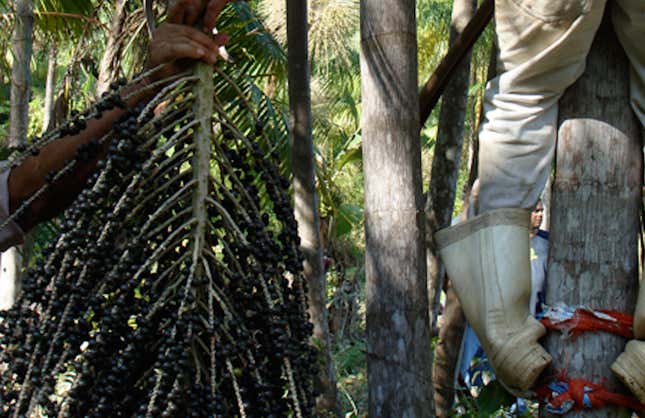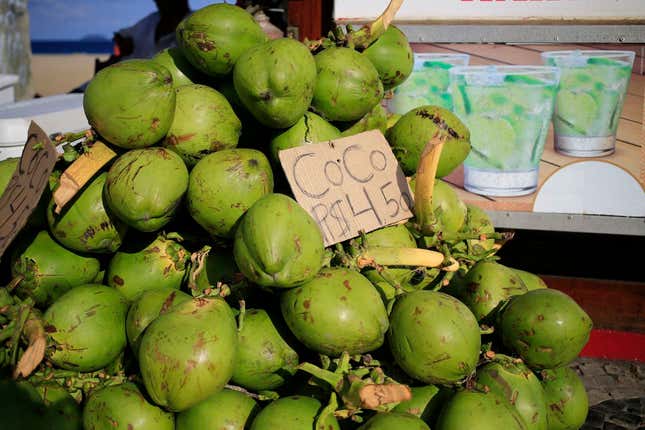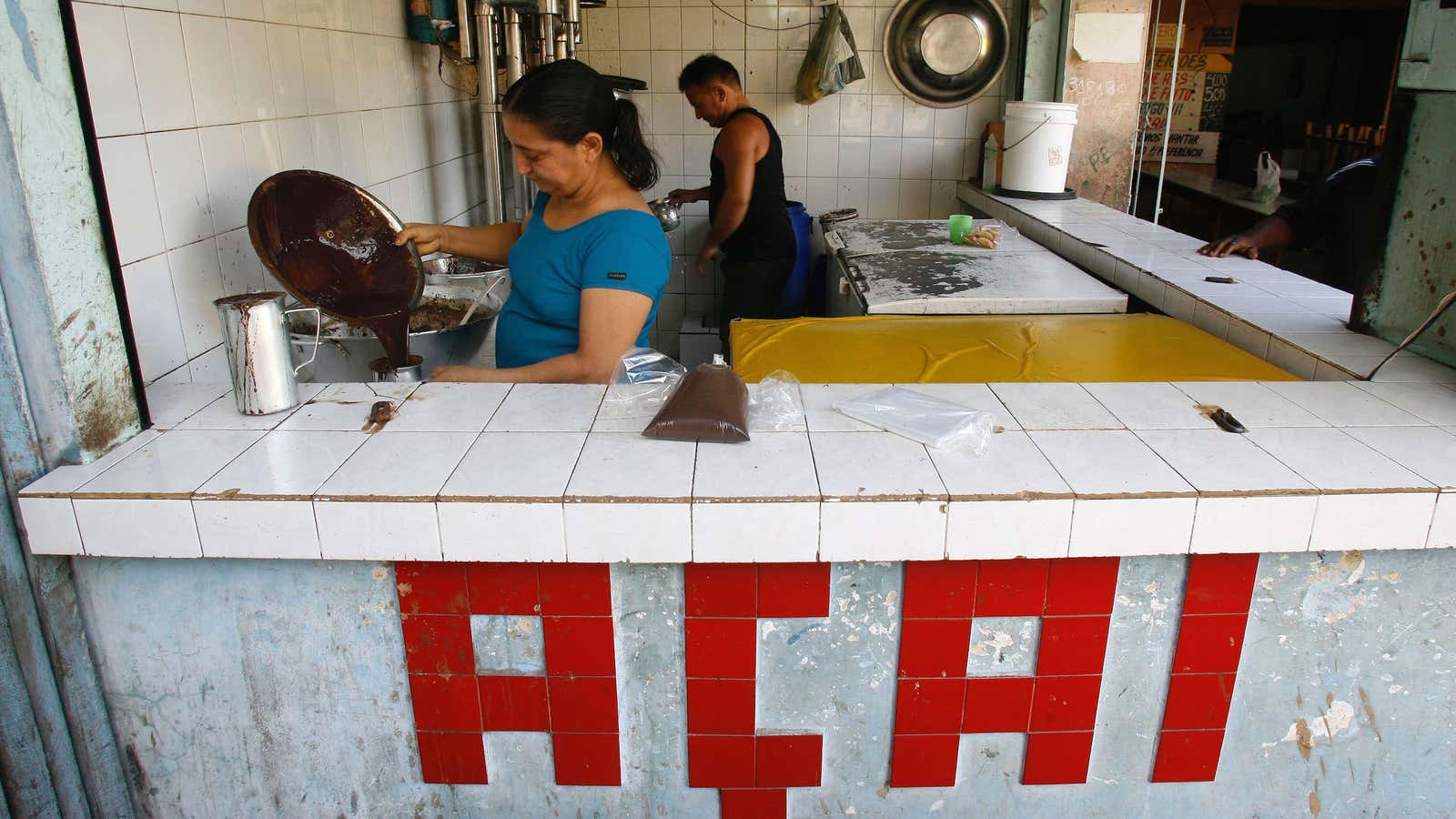Many of the World Cup teams in Brazil brought their own ingredients for pre-game meals—Italy packed their prosciutto and olive oil, the U.S. their peanut butter—but they may be wise to wash down those dishes with a couple of Brazil’s local drinks: açai and coconut water (known as agua de coco in Brazil). Due to recent spikes in popularity, beverages containing açai and coconut water may strike consumers as over-hyped, over-processed, sugary drinks disguised as natural beverages. But in Brazil, ordering an açai (pronounced “ah-sigh-ee”) or an agua de coco (just how it looks, but that de sounds like “jee”) can get you a pure, unadulterated natural sports drink that’s hydrating and healthy. Fun fact: both açai berries and coconuts are drupes—three-layered fruits with hard, stone-like seeds.

Where it comes from
Açai is a dark indigo-colored berry that grows on palms in the flooded regions of the Brazilian Amazon. (There, it’s a staple of the local diet—”the milk of the Amazon.” Some riverfront villages even have a community blender for easy processing.)
Coconut water is the water inside young, green coconuts that grow from palm trees largely planted along Brazil’s east coast (Portuguese).

How to enjoy it
Açai berries are marble-sized, highly perishable, and comprised largely of their very hard pits, which is why the berries are soaked, scoured, and processed as frozen pulp for export to markets outside the Amazon. It’s often mixed with guaraná syrup in Brazil, which adds sweetness and a caffeinated kick to the otherwise subtle tasting fruit. At Brazil’s ubiquitous corner juice stands, açai with banana and honey (“banana e mel”) is tough to beat. For a less cloying treat, ask for it without the syrup (“sem xarope”—pronounced “seng sha-roe-pee”). In North America, Sambazon sells organic frozen açai pulp that lets you do it home—with or without guaraná. Try it with pear juice, ice, and avocado for a rich shake, or use the classic ice, banana, honey, and soy/almond/coconut/just plain milk mix as the base for a granola-topped bowl.
Coconut water is the very best from a straw, stuck straight into the fruit itself. Brazil’s many road and beach-side coconut stands offer the option of a coco “gelada”—which means cold, and is worth the extra buck or two if it’s sweltering outside. After you’re done, some coconut sellers will use a machete to whack the fruit open for you, and slice off a piece to use as a scraper for the pulp inside—also a treat. If you can’t drink it straight from the fruit, the taste of Harmless Harvest bottled coconut water comes in at a (pricey) close second. Harmless Harvest uses coconuts from Thailand, and tastes a little nuttier.
Why it’s good for you
Açai is rich in omega fats and antioxidants, which earned the berry much of its hype when it was hailed as a “super food” in North America. It also contains vitamin A, fiber, protein, and carbohydrates—some of the components that nutritionists identify as essential to a sports drink that helps athletes effectively recover.
Coconut water has lots of electrolytes, including potassium, which is not only good for bone and heart strength—it also can help muscle cramping. Like açai, coconut water also contains fiber, protein, and carbohydrates.
What to watch out for
Açai: Some beverages that claim to be “açai” on their labels actually contain precious little of the actual berry pulp. The safest way to ensure you’re getting the good stuff is to purchase frozen packets of pure açai and make it at home. Another way is to look at the listed ingredients in a bottled drink to see if açai is the first one. Also: it’s no light drink. Açai is rich in antioxidants and omega fats—and also calories.
Coconut water is commonly mixed with sugary fruit purees in its bottled and cartoned versions. Those beverages are relatively lighter in calories and sugars than common bottled sports drinks, but shouldn’t be gulped thoughtlessly like just plain water.
